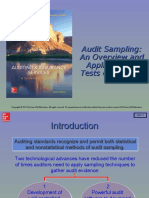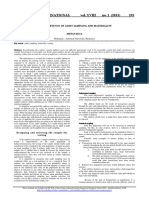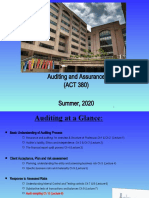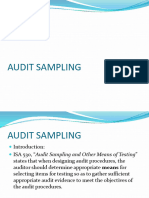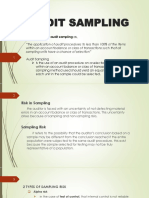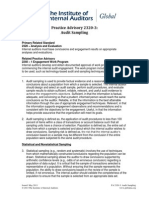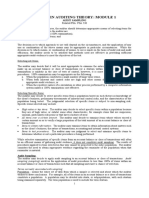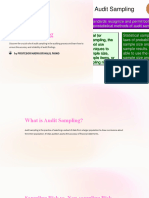0% found this document useful (0 votes)
8 views1 pageCHP 10 Tutorial Question
The document contains a series of tutorial questions focused on auditing practices, specifically regarding sampling techniques and concepts. Key topics include the rationale for using sampling, differences between judgmental and statistical sampling, and the management of sampling risk. Additionally, it covers various sampling methods such as attribute sampling and Monetary Unit Sampling (MUS), along with factors influencing sample size and the importance of tolerable deviation rates.
Uploaded by
PresanaCopyright
© © All Rights Reserved
We take content rights seriously. If you suspect this is your content, claim it here.
Available Formats
Download as DOCX, PDF, TXT or read online on Scribd
0% found this document useful (0 votes)
8 views1 pageCHP 10 Tutorial Question
The document contains a series of tutorial questions focused on auditing practices, specifically regarding sampling techniques and concepts. Key topics include the rationale for using sampling, differences between judgmental and statistical sampling, and the management of sampling risk. Additionally, it covers various sampling methods such as attribute sampling and Monetary Unit Sampling (MUS), along with factors influencing sample size and the importance of tolerable deviation rates.
Uploaded by
PresanaCopyright
© © All Rights Reserved
We take content rights seriously. If you suspect this is your content, claim it here.
Available Formats
Download as DOCX, PDF, TXT or read online on Scribd
/ 1



















